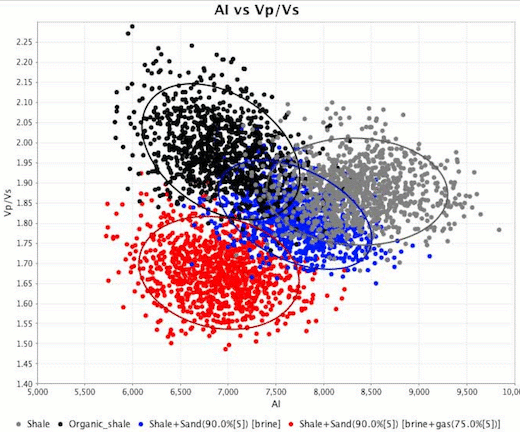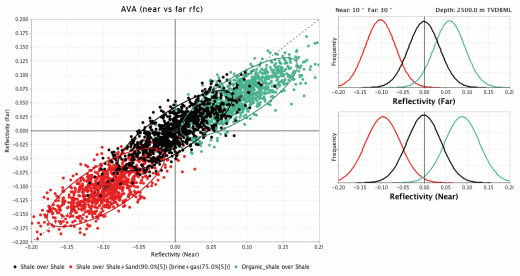The process can be calibrated at well locations, then used to generate individual probability volumes for all candidate lithology and fluid combinations.

Create any number of lithology / fluid combinations using mixing models and Gassmann fluid substitution.
Seismic amplitude and rock property forward modelling is performed stochastically (using a Monte Carlo simulation) to capture the expected range of responses for all candidate lithology / fluid combinations over the depth range of interest.
The end result is a set of multivariate probability density functions for each lithology-fluid combination, quantifying the inherent scatter in rock properties and range of seismic responses.

The QI Workbench gives you the ability to correctly predict how rock properties and AVA change with depth, fluid content, and lithological variations.
Furthermore, you’ll see whether AVA or particular rock properties aid in the discrimination of different lithology / fluid combinations, allowing you to identify the best inversion strategy.
The entire workflow respects both the depth-dependence and inherent scatter of elastic rock properties, to give an appropriate level of confidence in the results.